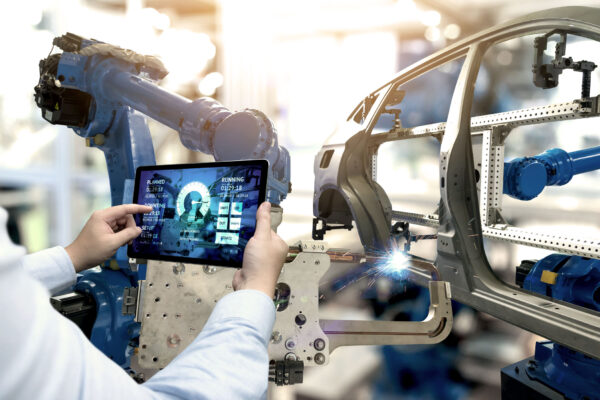For many, the idea of AI in the automotive industry brought up images of autonomous (self-driving) vehicles. These vehicles are certainly one of the more visible applications of the technology, but there is so much more behind the scenes and under the proverbial hood. AI and automation have become essential in the design and production of automobiles, as well as the thousands of associated parts that go into every car. Automation and the use of smart robots have been crucial to the manufacturing process.
AI has also become a critical part of the interplay between the production and the sales of automobiles. Sales data and vehicle data can be used in predictive modeling to better regulate production according to real-time demand. Beyond autonomous vehicles, here are some other areas in which AI in transforming the automotive industry.
Automotive Manufacturing
The manufacturing process starts with design and progresses through the supply chain, production, and post-production. Leveraging AI in the automotive industry enables the design of the vehicle as well as the equipment and robots used in the building of automobiles. Examples include AI-powered wearable exoskeletons that designers can wear to help develop better safety and comfort in cars.
Designing and testing an automobile and the thousands of parts involved in manufacturing can be immensely expensive and very time-consuming. The time commitment and financial investment are what make digital twin technology invaluable. What is a digital twin? Initially introduced 20 years ago, a digital twin is simply a virtual model used for testing processes, products, and services. Analysts, engineers, and scientists can study real world scenarios in safe, cost-effective, and virtual worlds.
In automotive manufacturing, digital twin technology offers a more cost-effective method for testing the car, or a part of the car using the virtual twin to gain a deeper understanding of the performance of the real-world product. Twin technology can also be used for testing fixes, modifications, or repairs. In addition to the obvious cost savings, companies may save time and reduce defects in the final product.
Life and Use of the Vehicle
Transportation benefits from the use of AI in the automobile industry by developing driver assist programs, autonomous driving, driver risk assessments, and driver monitoring such as tracking a driver’s eye to identify the danger of falling asleep at the wheel. In addition, AI can be used for predictive maintenance and notifications for things like engine and battery performance, as well as insurance programs that monitor driver behavior in calculating risks and costs.
The Driver’s Experience
Futuristic visions of self-driving cars may not be that far off, but AI offers more immediate and beneficial opportunities by upgrading the driver experience. Using computer vision, natural language processing, and robotic automation, manufacturers are producing vehicles that are safer and more comfortable. These vehicles come equipped with computer technology and connectivity that can better understand road and weather conditions, the behavior of other drivers, and traffic.
Consider these systems that are coming soon or already available:
- Driver monitoring from adjusting controls for different drivers to monitoring head and body position to detect drowsiness or to adjust body position during an accident.
- Driver Assistance can utilize AI to monitor blind spots, assist with steering and braking, alert drivers of dangerous conditions, and even help park the car.
- Driver assessment can analyze a driver’s history and predict potential issues based on historical behavior or even mood in certain circumstances.
Tap into Perficient’s automotive expertise to learn more about accelerating your automotive endeavors with AI.

